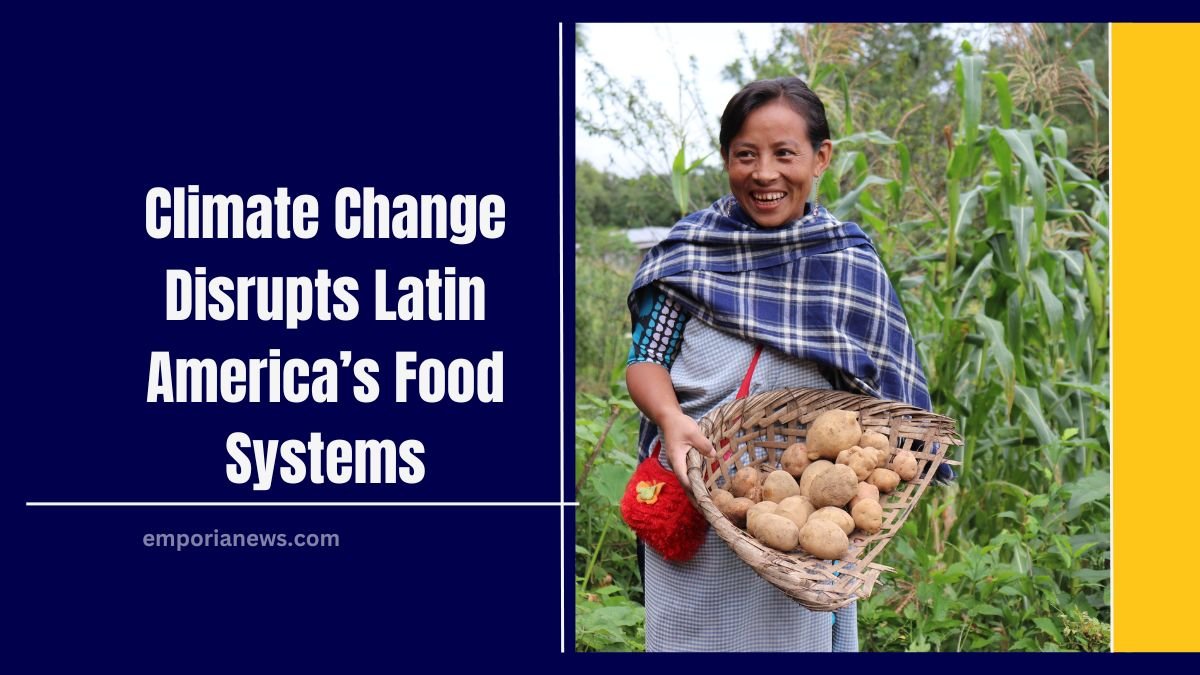Climate change is wreaking havoc on food systems across Latin America and the Caribbean, according to a new report by the United Nations.
The study highlights how extreme weather events—exacerbated by global warming and intensified by the El Niño phenomenon—are driving food insecurity and rising hunger across the region.
Here’s an in-depth look at the report’s findings, the impact of climate change on agriculture, and potential solutions to address this crisis.
Extreme Weather Fuels Rising Food Insecurity
The UN report points to violent weather patterns as a key driver of food insecurity across Latin America in 2023.
From prolonged droughts to heavy rains, the impacts of climate change have created cascading challenges for food systems:
- Drought: Hot weather and drought conditions raised the price of essential crops like corn in Argentina, Mexico, Nicaragua, and the Dominican Republic. This has significantly affected both farmers and consumers.
- Heavy Rain: Ecuador experienced heavy rainfall that caused wholesale crop prices to spike by 32-54% in 2023. The resulting erosion has forced farmers to use fragile grasslands, which further degrades the land and leads to long-term consequences for food production.
The report underscores the vulnerabilities of rural communities, where resources are scarce, and smallholder farmers struggle to recover from poor harvests.
Impact on Vulnerable Populations
Rural populations, particularly those in Indigenous farming communities, face the greatest risks. Limited income, low access to nutritious food, and an inability to adapt to extreme weather events exacerbate their struggles.
A 2020 study cited in the report found that 36% of small farms in Honduras and Guatemala experienced “episodic food insecurity due to extreme weather.”
Farmers in these areas often resort to selling what they can to survive, buying the cheapest, least nutritious food available.
Erosion and Land Degradation
Prolonged rainfall has caused severe erosion, forcing farmers to abandon degraded land and shift to new areas.
While these shifts may provide short-term relief, the cycle of erosion and resource depletion continues to harm agricultural sustainability.
Rising Costs of Healthy Diets and Processed Food Dependence
The UN report warns that climate change is increasing food prices, pushing many Latin Americans toward cheaper, ultra-processed foods that lack nutrition.
- Highest Global Cost: Latin America has the highest cost of healthy diets in the world, making nutritious food inaccessible to many.
- Obesity Epidemic: Since 2000, rates of both childhood and adult obesity have risen significantly, compounding the region’s health challenges.
Potential Solutions: Reviving Traditional Crops and Farming Methods
Amid the challenges, the report identifies potential solutions to combat the adverse effects of climate change on food systems.
1. Drought-Resistant Crops
Traditional crops, such as quinoa, mashua, and melloco, are not only nutritious but also highly resilient to drought and extreme weather conditions.
Efforts are underway to reintroduce these crops to modern diets, particularly among Indigenous communities.
2. Terrace Farming in the Andes
Traditional terrace farming systems in the Andes are incredibly effective in retaining moisture and preventing soil erosion. This method sustains ecosystems and supports human health outcomes.
- Example: In Caliata, Ecuador, most food is grown locally by families using traditional farming methods, resulting in healthier diets with low rates of chronic diseases.
3. Community-Led Initiatives
The World Food Program (WFP) is collaborating with smallholder farmers across Latin America to incorporate these traditional techniques and crops into modern farming practices.
Data Overview: Climate Change and Food Systems in Latin America
| Key Impact | Details |
|---|---|
| Countries Most Affected | Argentina, Mexico, Nicaragua, Dominican Republic, Ecuador |
| Price Increases (Ecuador) | 32-54% in 2023 |
| Small Farms Experiencing Insecurity | 36% in Honduras and Guatemala |
| Cost of Healthy Diets | Highest in the world |
| Traditional Crops as Solutions | Quinoa, mashua, melloco |
The Role of International Collaboration
The report calls for greater collaboration among governments, international organizations, and local communities to build resilience against climate change. Key priorities include:
- Investing in Infrastructure: Better irrigation and soil management systems to withstand extreme weather.
- Strengthening Social Safety Nets: Expanding food programs to help vulnerable populations during climate crises.
- Promoting Sustainable Farming: Scaling up traditional farming methods to improve yields and soil health.
Climate change is disrupting food systems across Latin America and the Caribbean, disproportionately affecting rural and Indigenous communities.
Rising food prices, land degradation, and an overreliance on processed foods have created a vicious cycle of hunger and malnutrition.
However, solutions rooted in the region’s rich agricultural heritage, such as drought-resistant crops and traditional farming techniques, offer hope.
By leveraging these practices, along with strong social safety nets and international collaboration, Latin America can build a more sustainable and resilient food system.
As extreme weather events become more frequent and severe, addressing the impact of climate change on agriculture is not just a regional priority but a global imperative.




